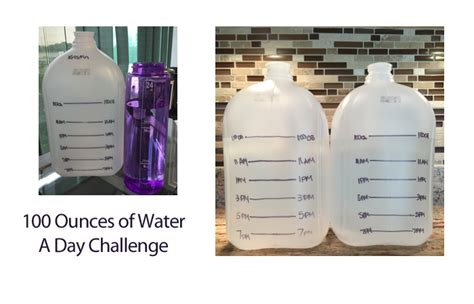How Much Is 100 Ounces Of Water
Kalali
Mar 31, 2025 · 4 min read

Table of Contents
How Much Is 100 Ounces of Water? A Comprehensive Guide to Volume and Measurement
Understanding fluid volume can be tricky, especially when juggling different units of measurement. This comprehensive guide will delve into the question, "How much is 100 ounces of water?", exploring its volume, equivalent measurements, practical applications, and even some surprising facts. We'll also cover the nuances of different types of ounces (fluid ounces vs. avoirdupois ounces) to ensure complete clarity.
Understanding Ounces: Fluid Ounces vs. Avoirdupois Ounces
Before we dive into the quantity of 100 ounces of water, it's crucial to differentiate between two types of ounces:
-
Fluid Ounces (fl oz): This is a unit of volume used for liquids. It's the measurement we'll primarily focus on when discussing water. One fluid ounce is approximately 29.57 milliliters.
-
Avoirdupois Ounces (oz): This is a unit of weight or mass. While you might encounter this term when discussing the weight of, say, a bag of sugar, it's not relevant when measuring the volume of water. The weight of 100 avoirdupois ounces of water would vary based on its temperature and purity, as water's density changes slightly depending on these conditions.
Therefore, when we talk about 100 ounces of water in this context, we're referring to 100 fluid ounces.
100 Fluid Ounces of Water: Visualizing the Volume
So, how much is 100 fluid ounces of water, exactly? Let's break it down:
-
In Cups: There are 8 fluid ounces in one cup. Therefore, 100 fluid ounces is equal to 12.5 cups (100 fl oz / 8 fl oz/cup = 12.5 cups). This is a good starting point for visualizing the quantity, roughly equivalent to a large pitcher or several sizable mugs.
-
In Pints: A pint contains 16 fluid ounces. 100 fluid ounces translates to 6.25 pints (100 fl oz / 16 fl oz/pint = 6.25 pints). Imagine a few standard-sized milk or juice containers.
-
In Quarts: A quart holds 32 fluid ounces. 100 fluid ounces is equal to 3.125 quarts (100 fl oz / 32 fl oz/quart = 3.125 quarts). This is approximately three and a quarter standard quarts.
-
In Gallons: A gallon contains 128 fluid ounces. 100 fluid ounces is approximately 0.78 gallons (100 fl oz / 128 fl oz/gallon = 0.78 gallons). This is a little less than one gallon.
-
In Liters: Using the conversion of 1 fl oz ≈ 29.57 ml, 100 fl oz is approximately 2957 ml, or 2.957 liters (100 fl oz * 29.57 ml/fl oz = 2957 ml). This is roughly three liters.
This breakdown gives you a clear picture of 100 fluid ounces of water in various common units. The amount is substantial, more than most people drink in a single day, highlighting the importance of understanding these measurements.
Practical Applications of Understanding 100 Fluid Ounces
Knowing the volume represented by 100 fluid ounces has practical applications in various aspects of life:
-
Hydration: While 100 fluid ounces is more than the daily recommended water intake for most adults, understanding this quantity is useful for tracking your water consumption over several days or for scenarios requiring larger amounts of water, such as athletic events or hot weather conditions.
-
Cooking and Baking: Many recipes utilize fluid ounces as a measurement for liquids. Understanding the equivalent in cups, pints, quarts, or liters enables accurate conversions.
-
Gardening and Plant Care: Watering plants often requires specific amounts of water. Understanding volume helps ensure your plants receive the appropriate amount of hydration.
-
Home Improvement Projects: Some DIY projects involving mixing liquids or calculating fluid quantities may require converting to fluid ounces.
Beyond the Numbers: Interesting Facts About Water
While we've focused on the quantitative aspect of 100 fluid ounces of water, here are some interesting facts about water itself:
-
Essential for Life: Water is the most crucial element for all known forms of life. It plays vital roles in various bodily functions, from regulating temperature to transporting nutrients.
-
Universal Solvent: Water's unique molecular structure makes it an excellent solvent, capable of dissolving many substances. This property is critical for numerous biological processes and chemical reactions.
-
Unusual Density: Water is most dense at 4°C (39.2°F), a property that has significant implications for aquatic life and global climate patterns.
-
Scarcity: Despite covering a significant portion of the Earth's surface, freshwater resources are surprisingly limited, highlighting the importance of conservation efforts.
-
Water Cycle: The continuous movement of water from the atmosphere to the Earth's surface and back again, crucial for maintaining global ecosystems.
Conclusion: Mastering Fluid Ounce Measurements
Understanding how much 100 fluid ounces of water represents is more than just knowing the numerical equivalents. It's about developing a practical understanding of volume and its implications in everyday situations. By grasping the conversions and their applications, you can approach various tasks – from culinary creations to hydration tracking – with greater confidence and accuracy. Hopefully, this guide provides a robust understanding, empowering you to confidently handle fluid ounce measurements in various contexts. Remember, precise measurements are often key to success in many endeavors, making a solid grasp of volume measurements an invaluable skill.
Latest Posts
Latest Posts
-
Como Calcular El Area De Un Triangulo Con 2 Puntos
Apr 02, 2025
-
What Is 19 20 As A Percent
Apr 02, 2025
-
2 Is What Percent Of 9
Apr 02, 2025
-
A Limit Involving The Cosine Function
Apr 02, 2025
-
How Much Is 36 Inches In Feet
Apr 02, 2025
Related Post
Thank you for visiting our website which covers about How Much Is 100 Ounces Of Water . We hope the information provided has been useful to you. Feel free to contact us if you have any questions or need further assistance. See you next time and don't miss to bookmark.
